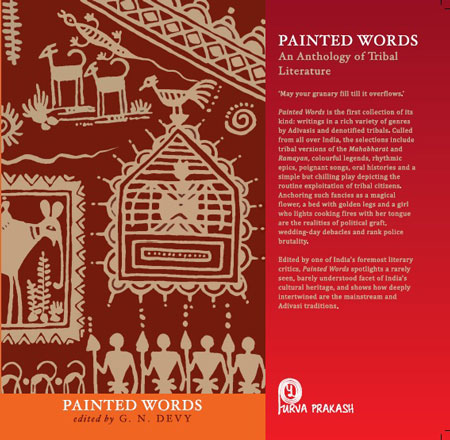“If women are empowered, there is more development in society” – Droupadi Murmu
Find this and other speeches by the President of India >>
Girls among the Koya tribe have a staggeringly low literacy level. “Girls hardly go to school, the literacy rate among girls is below 15 percent,” she adds. With little infrastructure for education and a strong tradition of early marriages within the community, most girls are bereft of any formal education. However, encouraged by their father, Jayanti and her four sisters have been educated. “Ours is the first educated family in the tribe in Malkhangiri,” she says. Her sister, in fact, is the first graduate of the community.
Jayanti currently works with Kalinga TV and reports from Malkangiri. Malkangiri is known as one of the most Naxalite-affected areas of Odisha. It also became home to Bangladeshi refugees who were rehabilitated from 1965 under the Dandakaranya Project. In the early 90s, thanks to the LTTE, Sri Lankan Tamil refugees were also rehabilitated here.
Jayanti’s dream to become a journalist has come true, but she still faces several challenges on the ground. “Being the only woman journalist on the field in Malkangiri is difficult. There is a lot of gender discrimination. Male colleagues seldom take me or my work seriously. I need to fight at every step” […]
Apart from being a journalist Jayanti also runs her NGO that focuses on education, especially for girls from her tribal community.
Source: “Meet the First Female Journalist of a Community Where Girls Hardly Go to School” by Lakshmi Karunakaran, thebetterindia.com, February 12, 2018
URL: https://www.thebetterindia.com/130765/koya-tribe-odisha-female-journalist/
Date accessed: 16 June 2018
“Tribal communities are a standing example of how women play a major role in preservation of eco historic cultural heritage in India.” – Mari Marcel Thekaekara (writer and Co-Founder of ACCORD-Nilgiris) | Learn more >>
Tips for using interactive maps
Toggle to normal view (from reader view) should the interactive map not be displayed by your tablet, smartphone or pc browser
For details and hyperlinks click on the rectangular button (left on the map’s header)
Scroll and click on one of the markers for information of special interest
Explore India’s tribal cultural heritage with the help of another interactive map >>
See also
Adverse inclusion | Casteism | Rural poverty
Childhood | Tribal Children’s Right to Education in India
Demographic Status of Scheduled Tribe Population of India (Census figures 2011)
Fact checking | Figures, census and other statistics
Human Rights Commission (posts) | www.nhrc.nic.in (Government of India)
Search tips | Names of tribal communities, regions and states of India
“What is the Forest Rights Act about?” – Campaign for Survival and Dignity
“Who are Scheduled Tribes?” – Government of India (National Commission for Scheduled Tribes, NCST)

Tribal Literature by G.N. Devy >>
Free eBooks & Magazine: Adivasi literature and languages >>
“India, a union of states, is a Sovereign, Secular, Democratic Republic with a Parliamentary system of Government. The President is the constitutional head of Executive of the Union. In the states, the Governor, as the representative of the President, is the head of Executive. The system of government in states closely resembles that of the Union. There are 28 states and 8 Union territories in the country. Union Territories are administered by the President through an Administrator appointed by him/her. From the largest to the smallest, each State/UT of India has a unique demography, history and culture, dress, festivals, language etc. This section introduces you to the various States/UTs in the Country and urges you to explore their magnificent uniqueness…” – KnowIndia (Government), States and Union Territories (Visited: 2 September 2023)
Learn more about India’s 28 States and 8 Union Territories – From Andhra Pradesh to West Bengal | Nutrition >>